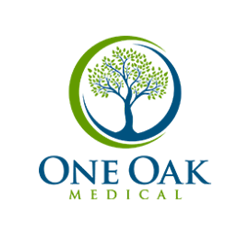Treatment from a Achilles Tendinosis Specialist in North Jersey, Staten Island & Long Island
Persistent, throbbing ankle pain without a clear injury may be a sign that you suffer from Achilles tendinosis. Highly skilled podiatrist Dr. Homam Badri and Dr. Ahmad Badri diagnose and treat patients with Achilles tendinosis at One Oak Medical’s offices in Wayne and Paramus, New Jersey. To find the source of your ankle pain, call or schedule an appointment online today.
Achilles Tendinosis Q & A
What is Achilles tendinosis?
Achilles tendinosis, sometimes called Achilles tendinopathy, develops when your Achilles tendon begins to deteriorate without any signs of inflammation. This condition may occur after repetitive injuries to your Achilles tendon leaves your cells unable to repair the damaged tissue effectively.
What causes Achilles tendinosis?
Both athletes and nonathletes are susceptible to Achilles tendinosis. Research published in the International Journal of Surgery reports that Achilles tendinopathy is the most common overuse injury in sports medicine.
Other factors that may increase your risk of developing Achilles tendinosis include:
- Diabetes
- Obesity
- Hypertension
- Hormone replacement therapy
- Birth control pills
What are the symptoms of Achilles tendinosis?
The most common symptom of Achilles tendinosis is pain or tightness in the tendon behind your ankle. Most of the time, this pain isn’t related to an acute injury but progresses slowly. Previous tendon injuries, such as Achilles tendonitis, may lead to degenerative tendinosis.
What is the difference between Achilles tendinosis and tendonitis?
You may have heard the terms tendinosis and tendonitis used interchangeably, but they’re not the same thing. While chronic Achilles tendonitis may develop into tendinosis, they’re two different conditions. The primary difference between the two is that tendonitis involves inflammation and swelling, while tendinosis does not.
Tendonitis is also easier to treat and often heals within several weeks of treatment with nonsteroidal anti-inflammatory drugs (NSAIDs). Tendinosis may take several months to heal and typically doesn’t respond to NSAID treatment.
How is Achilles tendinosis diagnosed and treated?
First, Dr. Badri performs a comprehensive exam and reviews your medical history. If he suspects Achilles tendinosis, he may suggest diagnostic imaging tests, such as an ultrasound or MRI.
Then, he develops a personalized treatment plan that best relieves your particular symptoms. Treatment for Achilles tendinosis may include:
- Physical therapy
- Orthotic devices
- Avoiding activities that irritate the tendon
- Ultrasound therapy
- Massage
- Shockwave therapy
If your pain doesn’t improve with treatment, Dr. Badri may recommend surgery to repair your Achilles tendon.
To find relief from persistent pain in your Achilles tendon and stop your condition from getting worse, call One Oak Medical or use online booking to schedule an appointment with Dr. Badri.
